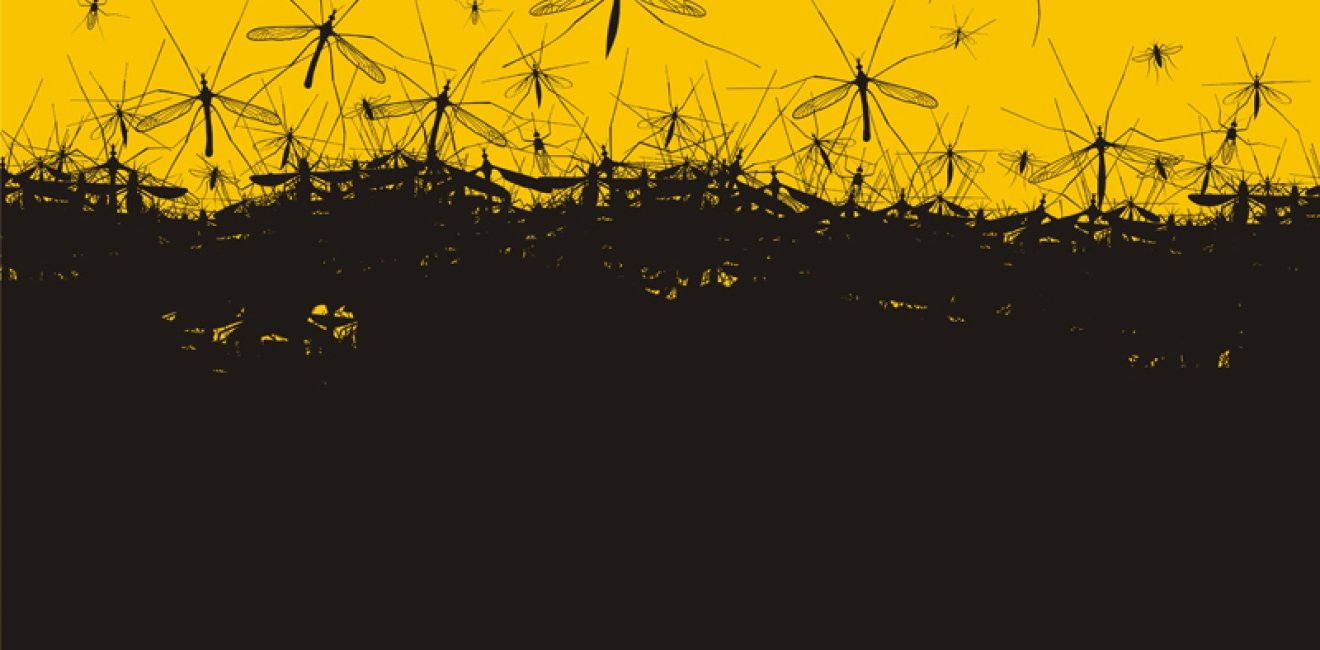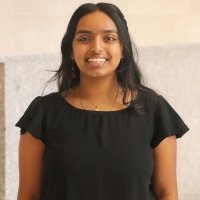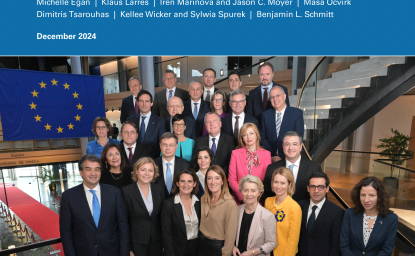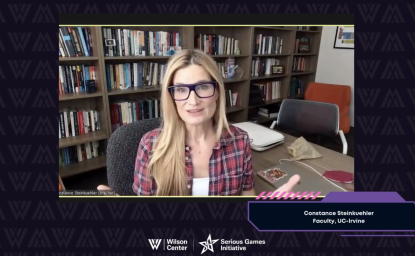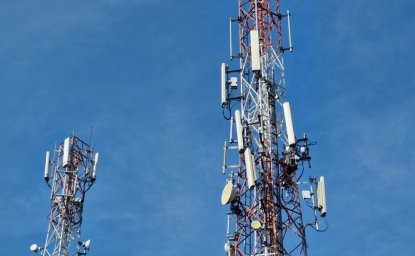This article was partially informed by an expert roundtable, hosted by the Wilson Center, in partnership with Malaria No More and the US President’s Malaria Initiative (PMI). The authors appreciate expert review by Dr. Russanne Low, PhD, Senior Earth Scientist with the Institute for Global Environmental Strategies.
Introduction
Malaria has long been a pervasive problem in many regions, but the recent rise of the species Anopheles stephensi, a subspecies of mosquito primarily found in India, has been especially worrying to public health officials around the world. Most species of Anopheles mosquitos proliferate in natural habitats of standing water, which is why malaria has been a predominantly rural disease. Anopheles stephensi, however, is able to reproduce and thrive in artificial water storage containers, which are plentiful in areas without piped water, according to a 2023 essay in Citizen Science: Theory and Practice. This also makes them more capable of surviving and spreading in urban areas, where the increased population will also enable the spread of the disease. The species was originally native to Southwest Asia, but quickly spread to the Horn of Africa due to the ability to thrive in urban areas, unlike other species of Anopheles mosquitoes. This is what makes Anopheles stephensi particularly dangerous; it has an unparalleled ability reproduce, migrate, and transmit disease making it especially difficult to track and treat malaria outbreaks. The severity of this situation is mobilizing the international public health community into finding new ways to track and mitigate the spread of mosquitoes, and consequently, malaria.
According to Dr. Ebenezer Baba, malaria advisor for the WHO African Region, “Integrated action will be key to success against Anopheles stephensi and other vector-borne diseases.” The rise of A. stephensi indicates a need for quick and extensive mapping. This is what makes some innovative technologies for malaria mapping so promising: they allow for more data to address this problem and allow more people to participate in collecting those data. With a well-coordinated effort that builds up from the local level to a global scale, public health officials can have access to the most accurate and reliable data on which to base decisions.
Data Collection for Malaria Mapping
Mosquitoes are an effective and elusive vector, making malaria one of the trickiest diseases to track and manage transmission, according to the Centers for Disease Control and Prevention. This makes it even more important to have extensive data on every aspect of the disease, from information on various species of mosquitoes to information on specific outbreaks across the world. Both historically and currently, having the most extensive dataset and best available data underpin mitigation efforts; historical mitigation efforts have always relied on having the most extensive data set, and more recent efforts, from geographic information systems (GIS) to artificial intelligence (AI), are able to create more accurate models based on this data-–models which are improved by having the best available data.
In the 1972 World Health Organization (WHO) Brazzaville conference, controlling malaria was declared a short-term goal, with complete eradication the long-term goal. There were two primary methods of tracking malaria at that time: risk mapping and epidemiological models. Epidemiological models try to predict where outbreaks will occur based on environmental conditions and the population movement patterns of mosquitos, and risk maps track the actual cases for a particular disease to plan health interventions, monitor outbreaks, and identify vulnerable populations, according to a 2022 thesis from Kaleem M. Hawa at Oxford University. These strategies offer various benefits, but both rely on having extensive amounts of data. The WHO put forward a high-resource initiative to collect this data, which was effective yet costly and difficult to sustain for long periods of time. Since the early 2000s, data scientists have been modernizing these methods.
Now, GIS-based simulation models can simulate mosquito population dynamics and disease transmission based on various factors such as weather conditions, habitat suitability, and human behavior. These models can be used to forecast potential outbreak scenarios and evaluate the effectiveness of different intervention strategies. AI has also improved mapping technologies generally, but they still rely on greater quantities of high-quality mosquito data from the field.
Collective Effort & Citizen Epidemiology
A variety of innovative approaches bring an element of collective effort to the malaria problem, and may be particularly effective in addressing A. stephensi.
Most of these approaches revolve around accessibility—first and foremost, these projects generally use technology that is affordable and common to areas with fewer technological resources. Secondly, these projects can be especially useful for building robust databases. With projects running in multiple locations, it is easier to collect data from a wider range of subjects over a larger area altogether. Furthermore, if data collection methods are accessible and accurate, it is easier to share this data to create larger databases that can be used by local, national, and international public health officials.
Three approaches to making data collection more accessible include:
-
According to the Open Source Hardware Association, open source hardware is hardware whose design is made publicly available so that anyone can study, modify, distribute, make, and sell the design or hardware based on that design; this approach focuses on access to the physical tools of science.
-
Defined in the NASA Transform to Open Science curriculum, open source software are computer programs in which the source code is available to the general public for use or modification from its original design (code); this can help people gain access to databases and web-based tools.
-
Citizen science is the practice of public participation and collaboration in scientific research to increase scientific knowledge (defined by NASA TOPS), and engages the public in the scientific process.
All three relate to “citizen epidemiology,” which, in this case, allows more and different people to mobilize against malaria, and in particular, the effects of A. stephensi.
A New Approach to Data Collection
New approaches to data collection are wide-ranging, from those enabled by open source hardware to the use of citizen science, providing a range of tools to tackle malaria. The GLOBE Program's GLOBE Observer application, sponsored by NASA, uses an app-based approach to data collection and visualization to be used as a tracker for mosquito populations. It uses satellites to visualize these habitats and migration patterns while allowing users to search for this information in a common database.
Citizen science projects capitalize on the accessibility of mobile devices. For example, the GLOBE Observer Mosquito Habitat Mapper (MHM), Mosquito Alert, and iNaturalist help users make use of smartphone global positioning systems (GPS) and high-resolution cameras to collect and share data pertaining to population movements, individual species, and outbreak statistics. iNaturalist is both a website and an app where people can submit photos of plants and animals, such as mosquitoes, and get a species classification for that organism. It is all written as open source code as well. iNaturalist connects people with their environment, but in the case of malaria, identification of an organism allows positional tracking of mosquitoes.
The Global Mosquito Observations Dashboard (GMOD) looks to integrate data from a variety of these sources, such as the GLOBE Observer program and iNaturalist, allowing local healthcare providers and public health officials to refer to it, as reported in the International Journal of Environmental Research and Public Health.
Other open source applications take a more healthcare-focused approach to gathering data. For example, Coconut Surveillance captures data about malaria cases from health clinics via mobile phones and dispatches that information to health workers with GPS-equipped mobile devices. This can help healthcare officials to map and treat infected households quickly and cost-effectively, while also providing broader information about mosquito migration patterns and their potential to transmit viruses.
There are also hardware-based methods of data collection on the horizon. For example, a team from the Singapore University of Technology and Design (SUTD) developed two mosquito-catching robots called ‘Dragonfly’ and ‘Koi’ respectively—they were used to track and interact with the Aedes species at the peak of their breeding season. Compared with traditional mosquito-catching technologies, robots like Dragonfly and Koi can move autonomously and cover the required routes and blocks in a short time, while other, more traditional methods are time-consuming, static, or only cover a small area. The largest barriers to implementing this technology on a broader scale are the costs associated with making it and the role of data sharing. One potential safeguard is the creation of public databases for such technologies to store information collected by any such devices as well as the use of blockchain systems to ensure constant monitoring of the data.
Regardless, it is clear that a mix of approaches will be crucial to managing large amounts of data. AI will play an important role in providing more processing power to compute large quantities of data, whether it is via a blockchain system to ensure proper data transfer or a mapping system that works in real-time.
Global Databases and the Importance of Interoperable Data
As technologies to facilitate collective contributions to malaria research emerge, there is an increasing need to coordinate the use of such technologies. As more and more data are being collected and shared via these systems, it is critical to recognize the role of citizen science in creating data and managing interoperable data, which are data that can be merged in a multitude of ways. The data collected by databases and applications such as GLOBE, Coconut Surveillance, and GMOD includes data on various species of mosquitoes, movements of an outbreak, mosquito population dynamics, and more—all of which can be used to formulate predictions and take preventative measures.
Researchers Ryan Carney, Sriram Chellappan and Russanne Low are leading a multi-disciplinary effort to collect data through a variety of smartphone apps, such as those listed above, to use artificial intelligence to fight mosquito-borne diseases . Described in a press release from the University of South Florida, these types of apps collect multitudes of data, such as images of mosquitoes from anywhere in the world, which could help with identification of various species and populations and to determine their potential to transmit specific viruses, such as West Nile, dengue, and Zika. Robust AI-powered mosquito identification models make use of citizen science reported data. Chellapan remarked in the same press release that, “These robust models are better tools for citizens to contribute data and reach county epidemiologists to have better disease forecasts.” Later both Carney and Chellappan emphasize the need for and benefits of citizen epidemiology. “It’s really a grassroots approach to leverage the computers that we all carry around in our pockets, smartphones, to fight the deadliest animal on the planet,” Carney said.
Likewise, the Global Mosquito Alert Consortium (GMAC) focuses on enhanced surveillance of A. stephensi and other vector-borne public health threats by connecting citizen science networks with global databases, as published in an article from the journal Insects. According to Citizen Science Global, GMAC is the “first global platform dedicated to advancing citizen science to tackle mosquito monitoring”. The WHO also has a number of resources and tools as a part of its Digital Solutions for Malaria Elimination initiative, which is a division of the Global Malaria Program. Separately, global datasets look at factors such as vector insecticide resistance, genetic differences, antimalarial drug efficacy, and drug resistance. These datasets are used in conjunction with modules that provide a set of data elements and indicators as well as validation rules and standard charts and tables. The modules are provided primarily to help readers further analyze and interpret the collected datasets; however, these modules can also be used individually to analyze other similar data. The datasets and modules are used together to create a Malaria Threat Map, which helps track populations and outbreaks.
Having a comprehensive database of interoperable data also helps to visualize and model data. A research report from Frontiers discusses one group’s study that tested out an ecological analysis of human movement and malaria epidemiology using data collected by portable GPS tracking devices and shared with local and global databases. This device uses an open source model to 3D print the parts, and all materials used to print the device were relatively low-cost. This provides a way to integrate low-cost surveillance technologies with accessible technology in order to contribute to larger databases.
Looking Forward: What’s On the Horizon and What Does This Mean?
Although collective approaches to malaria research are effective for tracking malaria cases and cataloging data, it is still a challenge to maintain comprehensive spatial and temporal coverage of vector mosquito populations. Mosquito surveillance and population mapping methods are time-consuming, labor-intensive, and require skilled workers—all of which are associated with higher costs.
In the case of A. stephensi, malaria technologies need to evolve. This is a multi-layered problem that requires a creative solution, or perhaps even multiple creative solutions. Most of all, it is critical for individuals on the ground to be able to inform local, national, and international public health officials as to what is happening. Now, with the aid of emerging and accessible technologies and databases, this can happen in real time. This provides us with a major advantage that we never had before: the capacity for extensive global collaboration.

